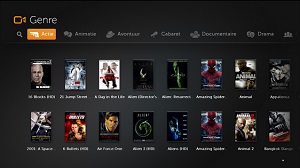Can Cloud UIs Lick the Latency Challenge?

As cable operators continue to migrate their user interfaces to the cloud, one key aim is to put into place an agile, media rich platform that allows them to make updates and changes at a rapid pace – something that they don’t get with resident set-top guides.
But at what cost? Critics of cloud-based user interfaces contend that the approach could be exposed to scalability and latency challenges. The latter is important because consumers won’t tolerate a system that’s plagued with long pauses between the time the button on the remote is pressed and the change occurs on screen.
Comcast’s new IP-capable X1 platform (and coming, multi-screen focused X2 upgrade) leans heavily on a cloud-based interface. When Comcast trotted out X1 at last year’s Cable Show, a top engineering exec was asked privately how much capacity was required to support the new UI. He didn’t offer a precise number, but likened it to “chicken feed.”
Since then, Comcast has rolled X1 to more than half its markets, and expects to have it rolled out across the board by the end of the year. This would suggest that it continues to see scalability and latency as a non-issue for the platform. But not all reviews of the product have been glowing. This one in The Salt Lake Tribune called it “sleek” yet “buggy, slow and occasionally frustrating just to record a television show.”
Charter Communications president and CEO Tom Rutledge raised some eyebrows earlier this month, when the MSO reported second quarter earnings. He noted that the MSO is testing a “hybrid approach” for a user interface that would put some of the smarts in the cloud, and in the box.
So, perhaps it’s not too surprising to learn that ActiveVideo, a vendor that happens to be working with Charter on its cloud-based user interface, has published a white paper (PDF) based on studies finding that its cloud platform supports latencies that are well within what the average consumer would tolerate.
Taking it further, the vendor also suggests that its approach also offers more predictability when it comes to latency when compared to UIs running resident in set-top boxes.
The smarter way to stay on top of the multichannel video marketplace. Sign up below.
According to ActiveVideo’s own studies and others that have looked at latency, the general level of acceptability for latency is under one second, with anything that’s one-half second, or 500 milliseconds, being more ideal. Anything above one second will make the response times feel sluggish.
“That’s a fairly loose standard,” admitted Jeremy Edmonds, director of solutions architecture at ActiveVideo.
ActiveVideo put its platform through the paces in lab settings – one in which its Cloud TV system ran natively, and another in which outside network variables that one would see in a real-world deployment would be factored in.
When Cloud TV ran alone, the roundtrip (a multi-step process that starts with the clicking the remote control, hits headend processing in the middle, and ends with a change appearing on-screen) was 130 milliseconds – “a very optimal number,” Edmonds said.
In its more stringent test, the latency averaged 300 milliseconds to 350 milliseconds – still well below typical tolerance thresholds.
“Cloud UI latency is proving to be inconsequential,” said Sachin Sathaye, Active Video’s VP of strategy and product marketing.
But those are results limited to ActiveVideo-run tests. Ziggo, the largest MSO in the Netherlands, has tapped the vendor’s system to power a cloud-based UI for its video on demand service.
Ziggo hasn’t released any specific latency numbers, but Eric Meijer, the MSOs senior project manager, felt good enough about the results so far to say the latencies have been "acceptable to all users.”
ActiveVideo has its client software running on 10 million “managed” devices thanks to deployments or trials Cablevision Systems, Ziggo, Comcast, Time Warner Cable and others not yet announced. Another 5 million-plus “unmanaged devices” are coming way of its agreement with Roku.
